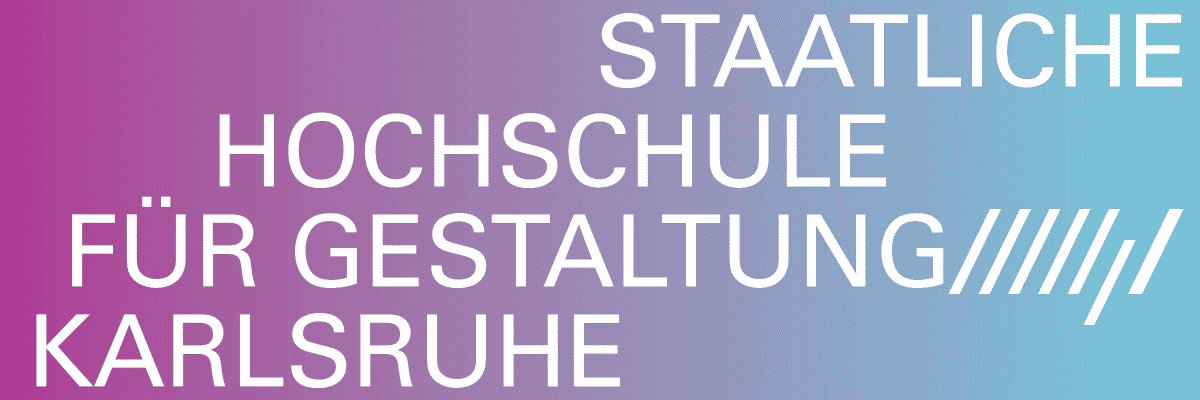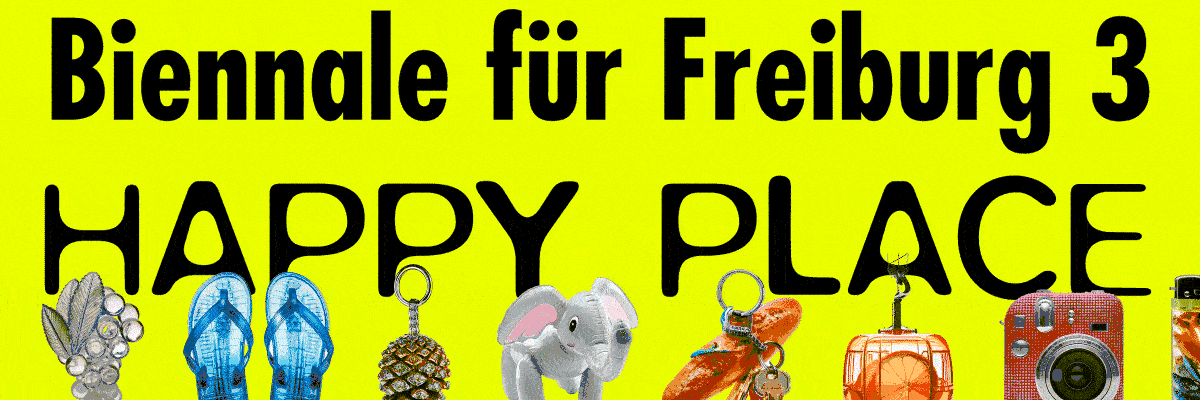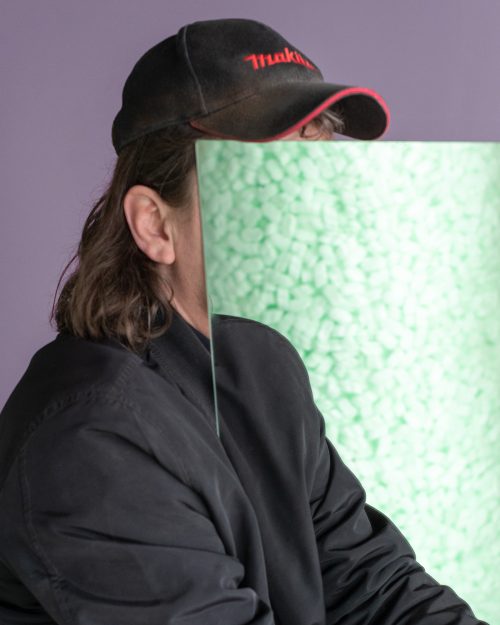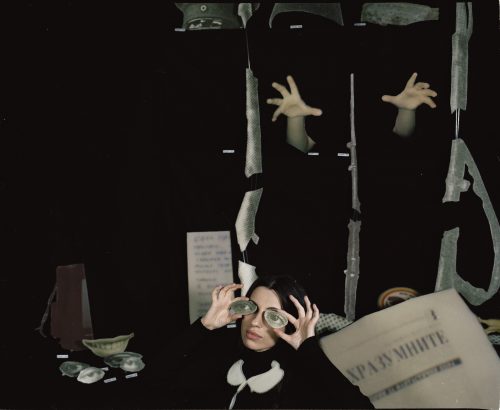
The Rodina
Always Avoid Discussion, Never Discuss

Advertisement















The assumption that the artistic duo The Rodina will present themselves through their graphic design work — the medium most commonly associated with Tereza Ruller and Vít Ruller — is seemingly unmet by this exhibition. You won’t find here the outputs of their design collaborations with internationally renowned cultural institutions, nor their music videos or performance recordings. Those interested can browse through their online archives. This exhibition instead focuses on the present architectural and institutional situation: it engages with the exhibition as a specific form of communication; it responds to the intricate layout of the space, does not obscure its historical arches, the dominant window system, or the “room-like” character of each section. Even this reflective, commentary-driven approach corresponds with the fundamental tenets of graphic design, where visual messaging is inextricably linked to a given referent.
At the same time, the exhibition offers something akin to a model representation of The Rodina’s artistic program and conceptual approaches. These include, for instance, media and material transfers between the virtual and the physical, between two-dimensional and three-dimensional forms, between different scales, and between technical imagery and painting that emphasizes specific texture, pigments, or substrate. (One might note a post-internet reference here — in the remixing, critical undertones, temporality, and blurred authorship.) The duo handles these transitions with confidence and ease, no doubt thanks to their professional experience spanning various creative fields such as performance, animation, curating, and programming.
Interestingly, neither originally studied graphic design: Tereza trained in intermedia art, while Vít studied social sciences — lending their artistic practice a clear and recognizable signature. Alongside communication in the sense of emotional engagement with the viewer, one of their key concepts is labor and authorship. This includes making visible the often “invisible” agents and creative processes, which are as important as the final result. Equally crucial is the presence of the creator as a physical person, including their corporeality; creation as a performative act; and the presence of technology.
This approach can be connected to the often-cited Actor-Network Theory of Bruno Latour, which attributes active agency and the capacity to act to technologies or objects. Every actor is part of a network of other actors — shaping and being shaped by this network. These are not static structures but dynamic webs of relations connecting people, institutions, technologies, etc. The artists effectively convey this dynamism through a performance realized within the exhibition by Tereza Ruller and Adéla Konečná — a performance co-created by the audience through their presence.
How, then, should we understand the radicality implied in the exhibition title Always Avoid Discussions, Never Discuss, when the show is about communication? As a call to abandon traditional forms of intellectual exchange based on argumentation, proof, and opposition. The emphasis is on process, intuition, affect, and interconnectedness — not on logical persuasiveness or rational precision. Here, art does not function as a vehicle for communicating fixed meanings, but as a method for generating new relationships, thoughts, and perceptions — rhizomatically, in layers, without a center. It does not rely so much on words, but instead on experience, material, space, and time — on openness to accident, error, fragmentation, or ambiguity.
Communication thus becomes not an exchange of opinions, but participation in a process that may lack a clear beginning or end, meaning or definitive interpretation. This exhibition offers a chance to try out and enjoy this approach — one that may unsettle or irritate, but can also delight.
How, then, should we understand the radicality implied in the exhibition title Always Avoid Discussions, Never Discuss, when the show is about communication? As a call to abandon traditional forms of intellectual exchange based on argumentation, proof, and opposition. The emphasis is on process, intuition, affect, and interconnectedness — not on logical persuasiveness or rational precision. Here, art does not function as a vehicle for communicating fixed meanings, but as a method for generating new relationships, thoughts, and perceptions — rhizomatically, in layers, without a center. It does not rely so much on words, but instead on experience, material, space, and time — on openness to accident, error, fragmentation, or ambiguity.
Communication thus becomes not an exchange of opinions, but participation in a process that may lack a clear beginning or end, meaning or definitive interpretation. This exhibition offers a chance to try out and enjoy this approach — one that may unsettle or irritate, but can also delight.
Marika Kupková




